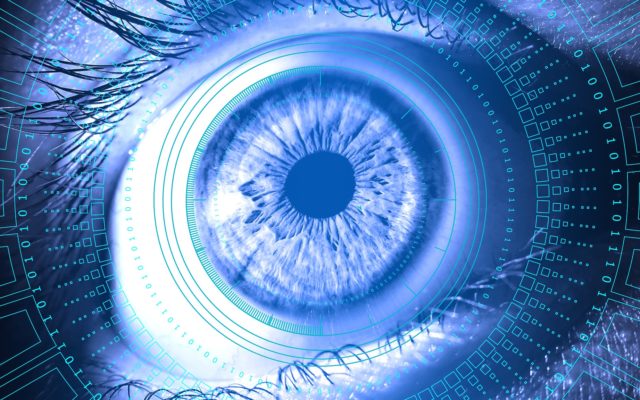This past year was replete with the cloud, artificial intelligence (AI), big data, digital transformation, devops, low-code platforms, the Internet of Things (IoT), edge computing, blockchain, and many more aspects of the enterprise software market. ’Tis that time of the year when we reflect on what we saw this year and predict what we are going to see this year and beyond.
Cloud Use as a Matter of Course
Software delivery through the cloud has long become mainstream. We’ve gone from the no-cloud (“customers are not asking for that”) posture of several years ago to the cloud-enabled and cloud-first scenarios that we see today, where almost all new enterprise software solutions are cloud only. However, the larger issue now is the increasingly hybrid nature of enterprise software landscapes and the need to easily tie up all those legacy on-premise software solutions with a plethora of newer cloud solutions and apps.
Figure 1 depicts the typical pain points of traditional on-premise software on the left side versus the desired benefits of cloud deployments. We predict that by 2020, more than 60% of companies will abandon owning their own data centres. By 2020, the top six infrastructure as a service (IaaS) cloud mega platforms (Amazon, Microsoft, Google, IBM, Oracle, and Alibaba) will handle more than 80% of enterprise workloads and processes.

Figure 1. Cloud computing considerations (Source: Siemens PLM Software)
Customers will avoid a vendor lock-in through multi-cloud management strategies (that include integration tools across public and private clouds) and cloud-native approaches to achieve portability. Think of using microservices, containers, open application programming interfaces (APIs), dynamic orchestration, and similar approaches. Salesforce’s hefty acquisition price for MuleSoft speaks volumes about this trending need for easy hybrid cloud integration.
By 2020, we predict that 40% of companies will base their decisions on IoT edge-collected data before sending it to the central processing cloud repository. This use of edge computing will address issues of bandwidth, latency, and processing data for real-time decision support. Going forward, organizations’ internal information technology (IT) teams will spend much more time and resources on developing vertical industry–oriented cloud software-as-a-service (SaaS) solutions, using commercially available platform-as-a-service (PaaS) offerings.
To combat the waste of paying for server capacity that often goes unused and idle, by 2020, more than 30% of enterprise IT operations’ spending will likely go to actual compensation. Serverless application development, i.e., software that runs without the need for a server provision, should help in that regard. An example of a serverless app would be a function that receives a geolocation and returns the top five businesses in a requested category in that geographic area.
Embedded AI for Both Software Developers and Users
AI will be used in enterprise software in more pragmatic ways (easily understandable and explainable) rather than in a black-box rocket science manner (not comprehensible to the average user). Several software capabilities will reduce the time users spend on low value-adding tasks—these include intelligent applications (that is, apps that sense problems and prescribe or recommend solutions in real time), automated processes, a simple user experience (UX), and conversational interfaces.
So AI will be used to increase the ease of use for software users. By 2020, 40% of companies are expected to rely on smart robotic process automation (RPA) and low-code software platforms to achieve competitive automation and business process agility. At the same time, about 60% of new enterprise software and productivity tools will have some degree of embedded RPA, machine learning (ML), and other intelligent tools. By 2020, 20% of enterprises will use conversational interfaces for sales, service, and customer engagement. Also by then, conversational user interfaces (UIs) and RPA tools will replace one-fifth of today’s solutions with character input screens.
AI will also be increasingly used to enable faster software development—that is, to facilitate integration, code reviews, testing, provisioning, and predictive application lifecycle management (ALM). By 2020, traditional developers will use visually guided functionality, via widgets or visual frameworks, to develop apps with low-code platforms. At the same time, this new class of developers that build enterprise applications without writing code will account for 20% of all developers. To improve productivity, they will also use external open source and commercial code repositories.
Blockchain Is Getting More Real
Next year will prove there is value in blockchain for logistics and supply chain management. As materials and goods change hands, it becomes increasingly difficult to track them—and this is where blockchain technology can fit in nicely. With the continued rapid growth of the population and subsequent greater stresses on global food production processes, consumers’ demands become ever more important. These demands are that the food that they are buying and consuming is as described (for example, there are no wood chips in my Parmesan cheese!), that the food is safe and ethically sourced and produced, and that individual products have moved through the supply chain in a timely manner to preserve high quality and minimize spoilage.
Another example of a valid use-case scenario would be blockchain-based protection of the authenticity and traceability of original 3D printing computer-aided design (CAD) drawings. This digital intellectual property protection from theft and loss becomes necessary in decentralized low-cost sourcing setups. Prominent intra-industry value chains (for example, medical devices and aviation), once enabled by blockchain technology will be able to significantly reduce multichannel transaction costs—possibly by some 30%.
Thus, we believe that by 2020, about 10% of manufacturers and retailers globally will use blockchain services, enabling collaborative supply chains and allowing consumers to access their product histories. We look forward to getting together in 12 months or so to evaluate how correct (or off the mark) our predictions presented here will turn out to be.
Related Reading
How enterprise software can harness AI for smart manufacturing
The Future of ERP Software Is Self-Driving
What Do SMBs Want and Need from ERP Software?
Will Businesses Look to RPA for Managing Repetitive HR and Accounting Processes?
ProgressNEXT 2018: Cognitive, Adaptive, and Connected Enterprise Software
Article by channel:
Everything you need to know about Digital Transformation
The best articles, news and events direct to your inbox
Read more articles tagged: AI, Blockchain, Cloud, Featured







